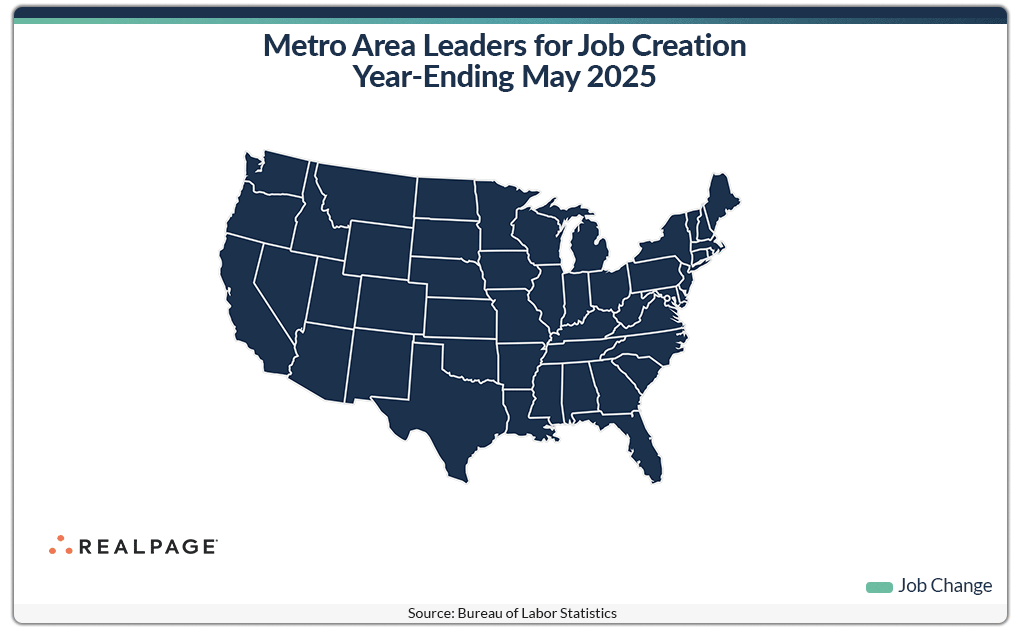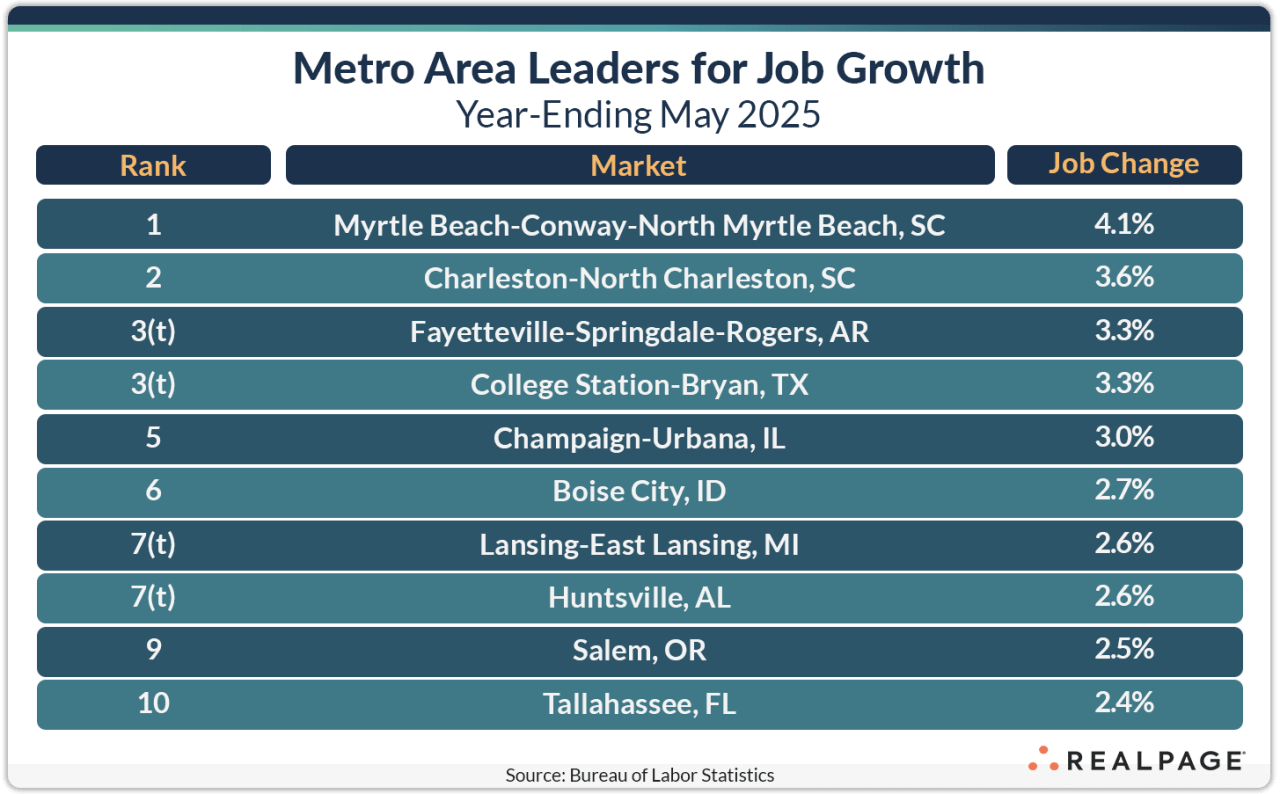While still among the top markets for employment gains, Texas has seen a decline in rankings among the top 150 markets in the country.
Houston and Dallas both slipped two spots on this month’s list of the top 10 leaders for job creation, from #2 and #3 to #4 and #5, respectively. Each added close to 29,000 jobs for the year. While San Antonio returned at the #8 spot, Austin dropped out of the top 10 in February after eight consecutive months among the top 10, ranking #12 in May. To be fair, the Dallas/Fort Worth metro would have consistently ranked either #2 or #3 for job gains over the past year (including this month).
New York is still #1 for job creation with 76,700 jobs gained in the year-ending May. That was 39,000 jobs fewer than the previous 12 months. Note that this month RealPage is using the most recent CBSA names and geographic definitions based on the 2023 Office of Management and Budget delineations. In some cases, new CBSAs created in the 2023 delineations (like Kiryas Joel-Poughkeepsie-Newburgh, NY) were re-combined with their former metros (New York-White Plains) for consistent historical comparisons.
Philadelphia and Orlando ranked ahead of Houston and Dallas in May, with Washington, DC and Salt Lake City following Dallas. After San Antonio, Charlotte slipped four spots to rank #9, gaining 24,600 jobs for the year, about even with last year’s pace. Miami rounded out the top 10 with a gain of 23,700 jobs. Although several markets moved around on this month’s top 10 list, all of April’s top markets returned in May.
Together, the top 10 markets added 335,200 jobs in the year-ending May, which was about 75,500 less than the same 10 markets last May (down 18.4%). Additionally, the next 10 markets (#11 to #20) of RealPage’s top job gain markets saw their total gains decrease 15.1% from last year to total 173,200 new jobs.
Metro level job gains continue to slow as the last time any market exceeded 100,000 new jobs was in January and only New York gained between 50,000 and 99,999 jobs in May. The next 10 markets gained 20,000 jobs or more for the year (including #11 Los Angeles), one more than last month. However, twenty-three of our top 150 markets reported annual job losses for the year, one more than last month. Job losses continue in the Bay Area and in several Midwest markets such as St. Louis, Des Moines, Milwaukee, Kansas City and Akron.
Job Growth
Unlike the top job gain markets, which tend to be large in population and employment, smaller markets usually dominate the top markets for annual percentage change in employment. As we typically see, state capitals, college towns and resort or tourist destination cities dominate this list. Six of April’s top markets for job change returned in May.
Myrtle Beach and Charleston remained in the top two spots on this month’s list with improvement in their percentage growth of 30 to 40 basis points (bps). The college towns of Fayetteville, AR and College Station, TX tied for the next spot with job growth of 3.3% in May, both up 80 bps for the month.
Champaign-Urbana, IL jumped onto this month’s growth list at #5, followed by Boise, ID at #6. Lansing, MI and Huntsville, AL tied for #7 with 2.6% job growth, while Salem, OR ranked #9.
Tallahassee, FL improved annual job growth by 170 bps to rank #10 in May with 2.44% growth. Close behind Tallahassee were Jackson, MS, Albuquerque, NM and Greenville/Spartanburg, SC with growth of 2.35% to 2.39% (2.4% rounded for all four).
Outside of these top growth markets, Salt Lake City, Urban Honolulu, Columbia, SC, San Antonio, Orlando and Gainesville, FL had employment growth rates of between 2.1% and 2.3%. Including the top 10, there were 59 markets that exceeded the national not seasonally adjusted growth rate of 1.08%, eight more than last month.
This post is part of a series by RealPage Senior Real Estate Economist Chuck Ehmann analyzing employment data from the Bureau of Labor Statistics. For more on this data, read previous posts on Job Growth.









